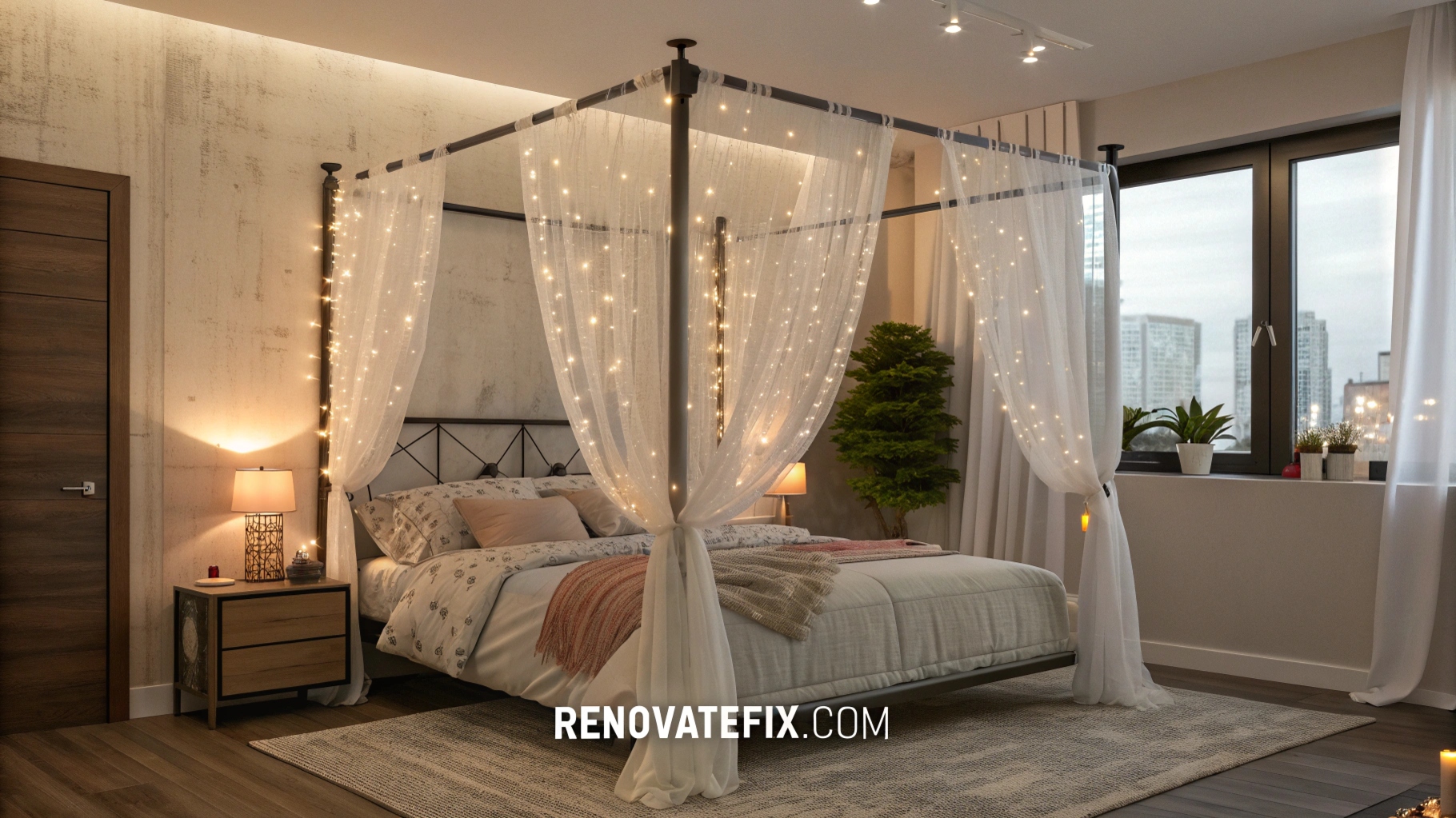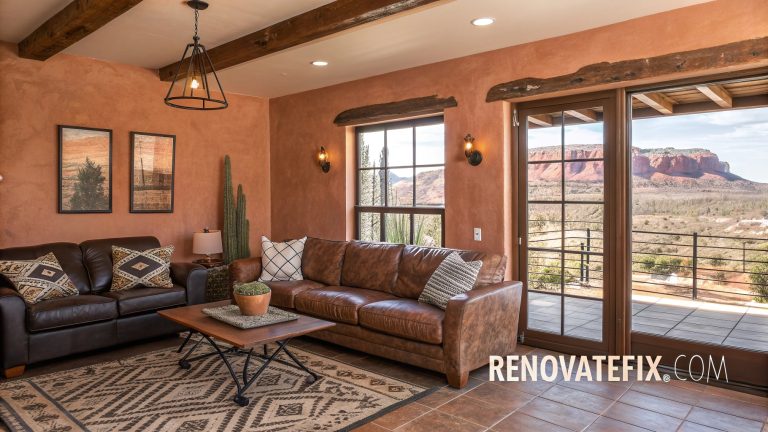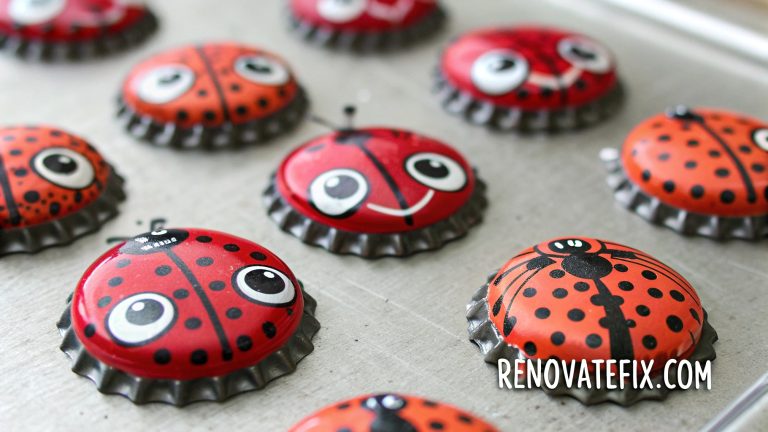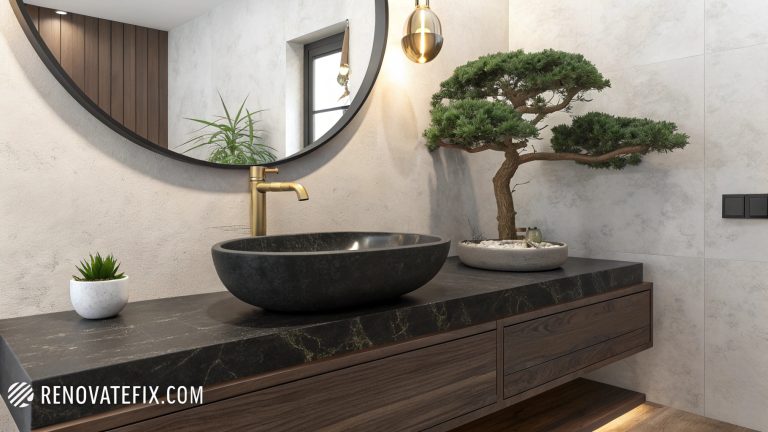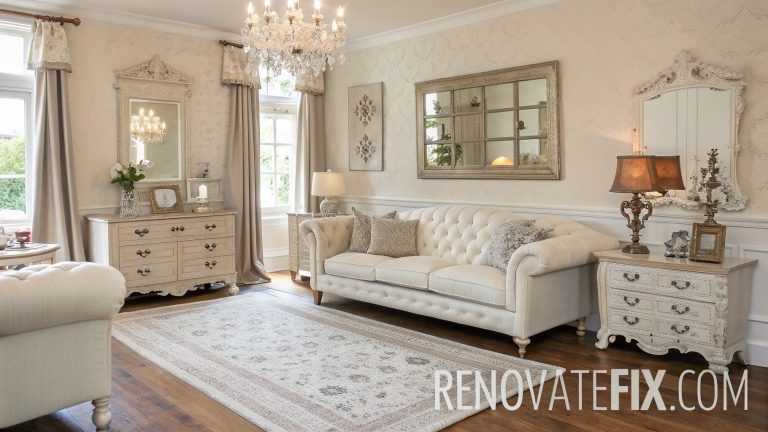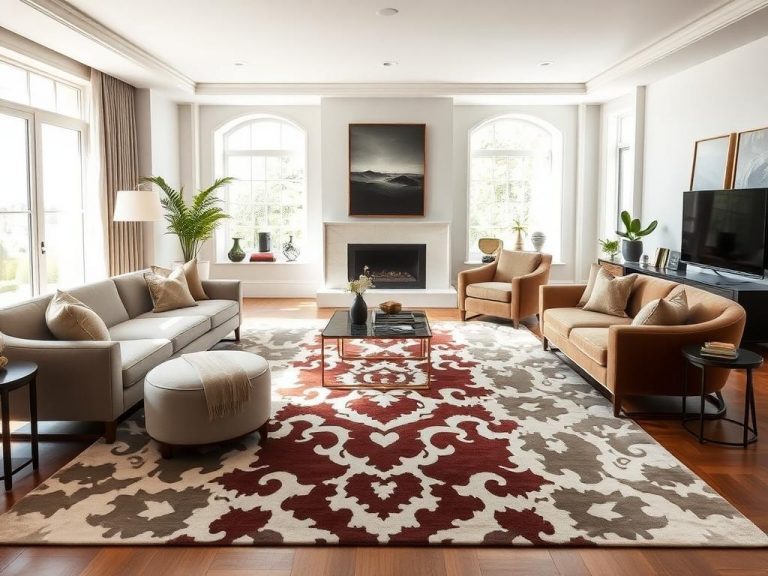Bedroom Ideas for Couples: Creating Your Perfect Shared Sanctuary
Your bedroom serves as more than just a place to sleep—it’s a sanctuary where you and your partner can relax, reconnect, and rejuvenate.
Creating a space that reflects both personalities while fostering intimacy and comfort requires thoughtful planning.
This guide explores exceptional bedroom ideas for couples that blend functionality with style, helping you craft a shared retreat that nurtures your relationship and meets both your needs.
From color schemes that promote restfulness to layout configurations that maximize space, these suggestions will inspire you to transform your bedroom into a harmonious haven where you can both thrive.
1. Dual-Tone Wall Paint
A split-color wall creates visual interest while honoring both partners’ preferences.
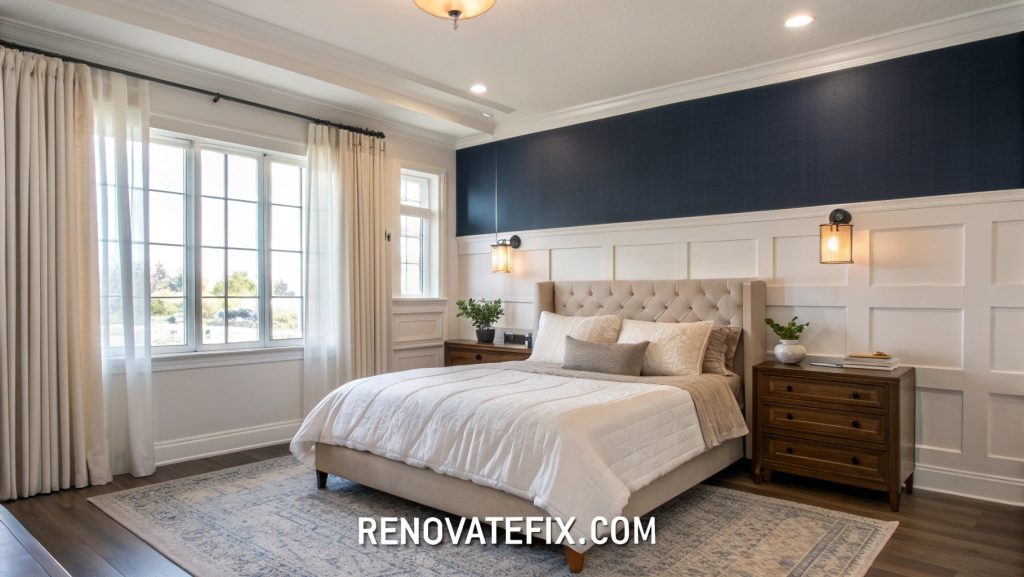
Paint the lower half in a darker shade and upper portion in lighter complementary hue for balanced aesthetic that feels cohesive yet dynamic.
This approach allows couples to compromise on color choices without sacrificing personal taste, resulting in a room that feels mutually designed.
2. Symmetrical Nightstand Setup
Matching bedside tables with personalized elements provide equal space for essentials while maintaining visual balance.
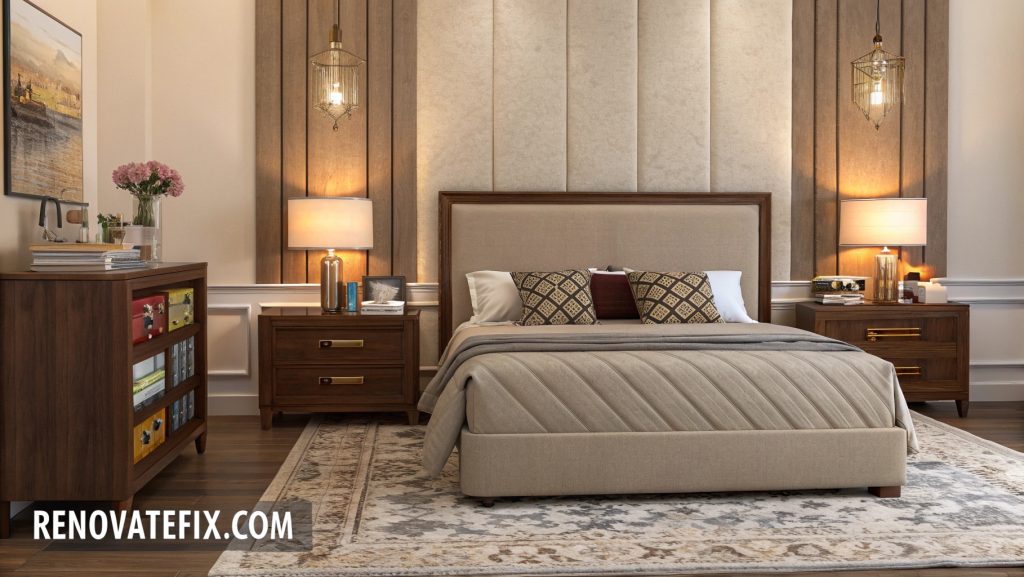
Give each person identical furniture pieces but allow individualization through books, lamps, or decorative objects atop them.
This arrangement respects personal needs while creating pleasing symmetry that brings order and calm to your shared sleep environment.
3. Reading Nook With Double Seating
Carve out a cozy corner featuring two comfortable chairs positioned near windows, creating perfect spot for parallel relaxation activities.
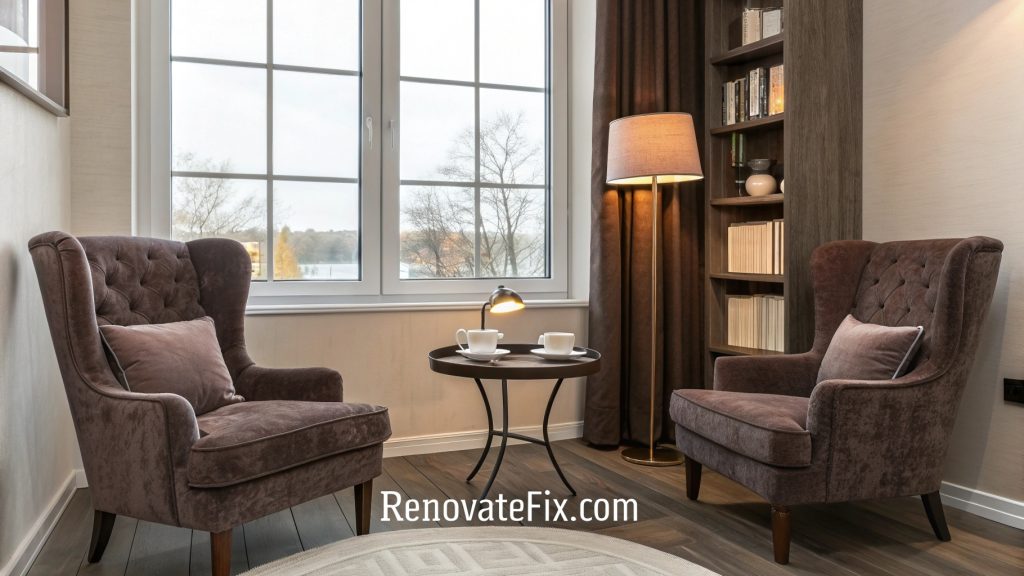
Add a small shared table between seats, adequate lighting options, and soft throws for ultimate comfort zone where couples can read, chat, or simply enjoy quiet togetherness without disturbing bedroom’s restful atmosphere.
4. Mixed Textile Bedding
Combine various fabric textures across bedding elements to create sensory-rich sleep environment that appeals to different tactile preferences.
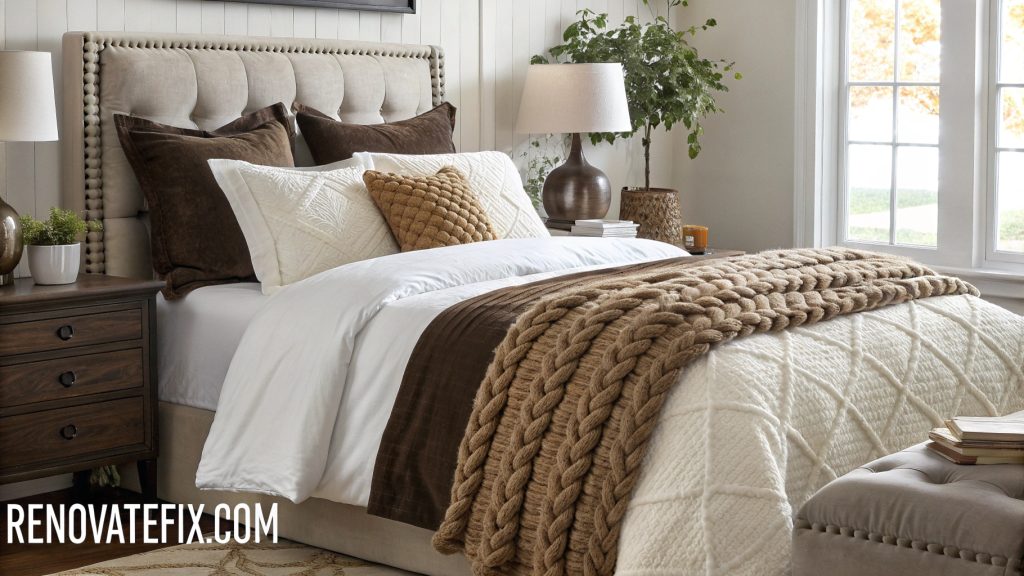
Layer silky sheets under nubby blankets, add velvet pillows alongside linen shams, introducing variety that makes bed inviting to both partners regardless of texture sensitivity while maintaining cohesive color story throughout.
5. Floating Shelf Headboard Wall
Install series of horizontal shelves behind bed area instead of traditional headboard, creating functional display space and storage solution simultaneously.

Place meaningful objects, small plants, or artwork across different levels, allowing both partners to showcase personal items without cluttering nightstands or dresser tops.
6. Dual Vanity Station
Designate space for double-sided makeup or grooming area with separate mirrors and storage compartments tailored to each person’s routine.
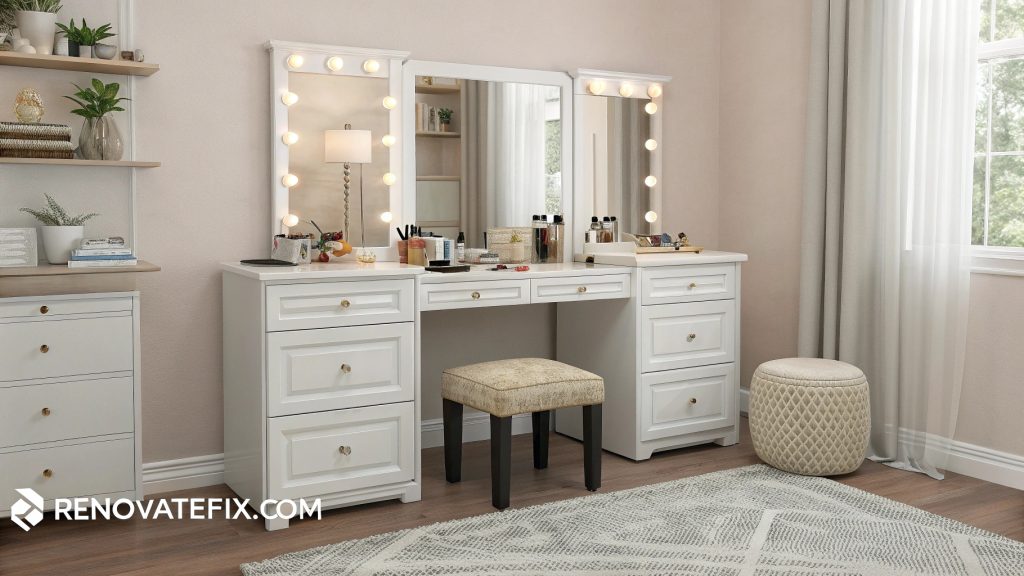
Position furniture piece near natural light source with adequate seating options, enabling partners to prepare simultaneously without crowding bathroom spaces during busy mornings.
7. Statement Ceiling Design
Focus decorative attention upward with painted mural, applied wallpaper, or architectural details that create unexpected visual interest above bed.

Choose pattern or color that complements overall room scheme while adding conversation-worthy element both partners can appreciate from horizontal perspective during relaxation time.
8. Hidden Tech Solutions
Integrate technology thoughtfully through concealed charging stations, retractable television cabinets, or smart home controls that maintain room’s peaceful ambiance.
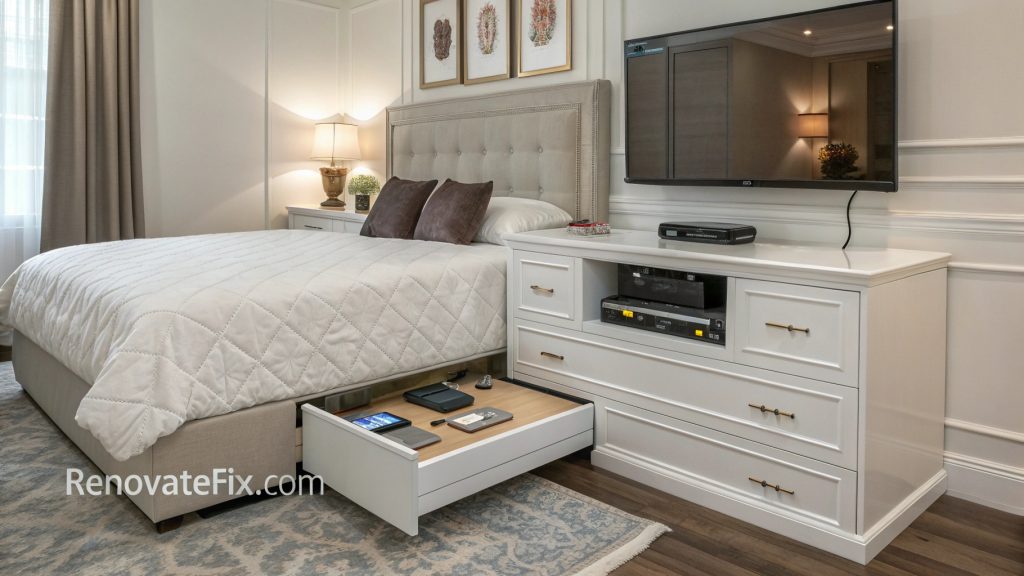
Create systems that allow access to devices when needed but keep wires, screens, and gadgets hidden during romantic or restful moments, striking balance between connectivity and sanctuary feeling.
9. Memory Wall Gallery
Curate collection of framed photographs, mementos, and artwork representing relationship milestones and shared adventures, arranged thoughtfully on prominent wall.
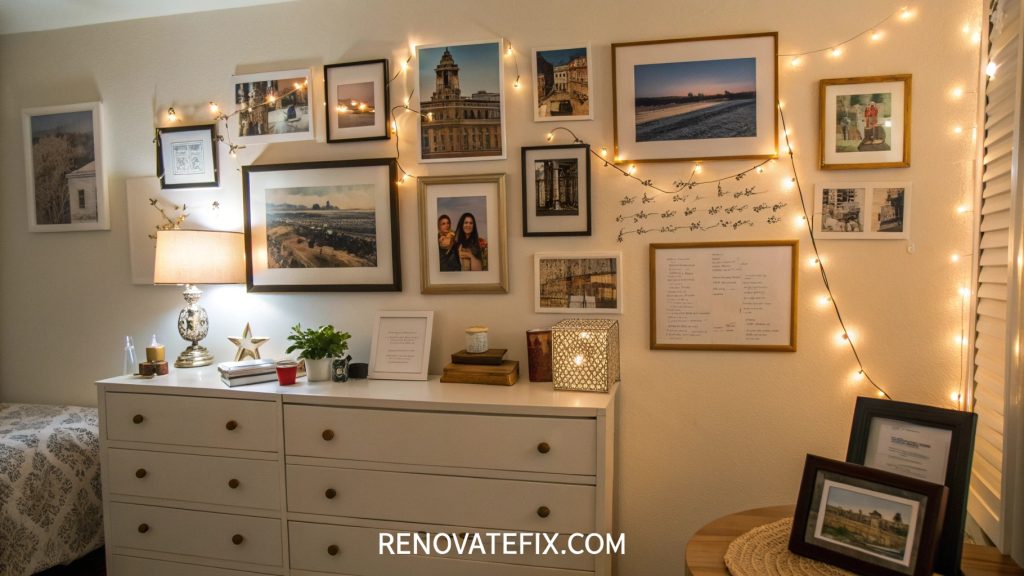
Mix frame styles while maintaining cohesive color palette, creating visual storytelling element that celebrates partnership history while personalizing bedroom space with meaningful imagery.
10. Canopy Bed Reimagined
Update traditional four-poster structure with lightweight fabric panels, string lights, or botanical elements that create sense of enclosure without heaviness.

This partial canopy approach adds romantic ambiance and intimate feeling while maintaining airiness and avoiding claustrophobic sensation that full canopies sometimes produce.
11. Window Seat Retreat
Convert under-utilized window area into cushioned seating bench with storage underneath, creating additional functional space for morning coffee or evening unwinding.
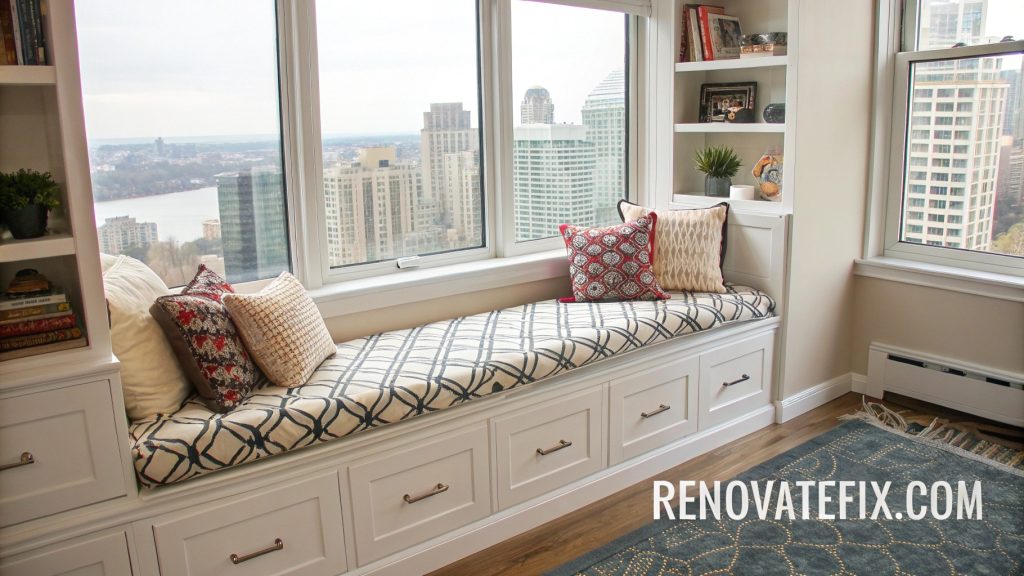
Add comfortable pillows in complementary fabrics, ensure adequate lighting for reading, and potentially incorporate charging ports for ultimate convenience during quiet moments together.
12. Adjustable Lighting Zones
Install varied illumination sources controlled independently through dimmer switches or smart systems, accommodating different activities and moods.
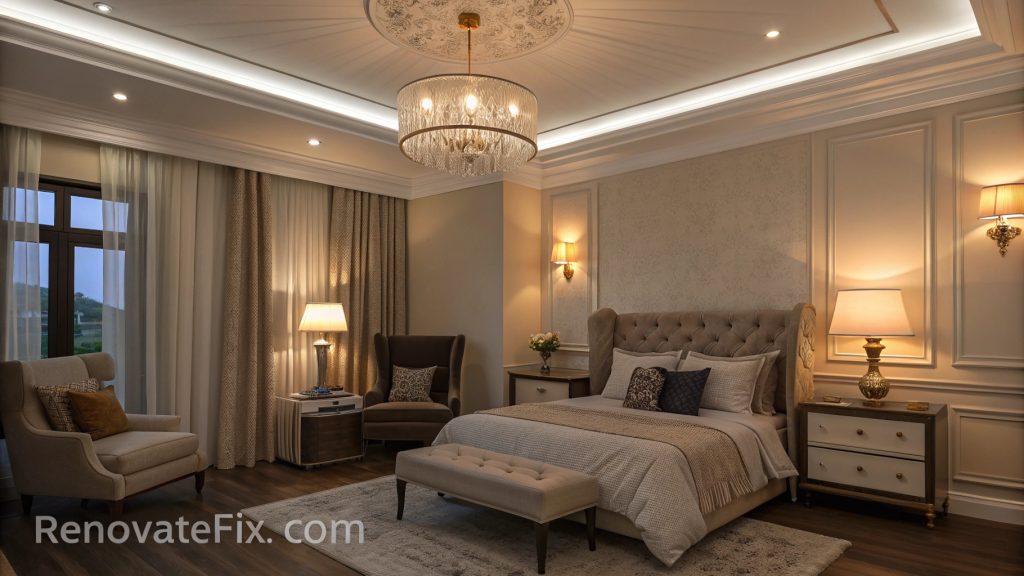
Combine overhead fixtures with task lamps, wall sconces, and ambient options, creating flexibility that respects one partner’s desire to read while other sleeps or sets romantic atmosphere when desired.
13. Sliding Room Divider
Introduce movable partition that can temporarily separate bedroom into distinct zones when privacy or space division becomes necessary.
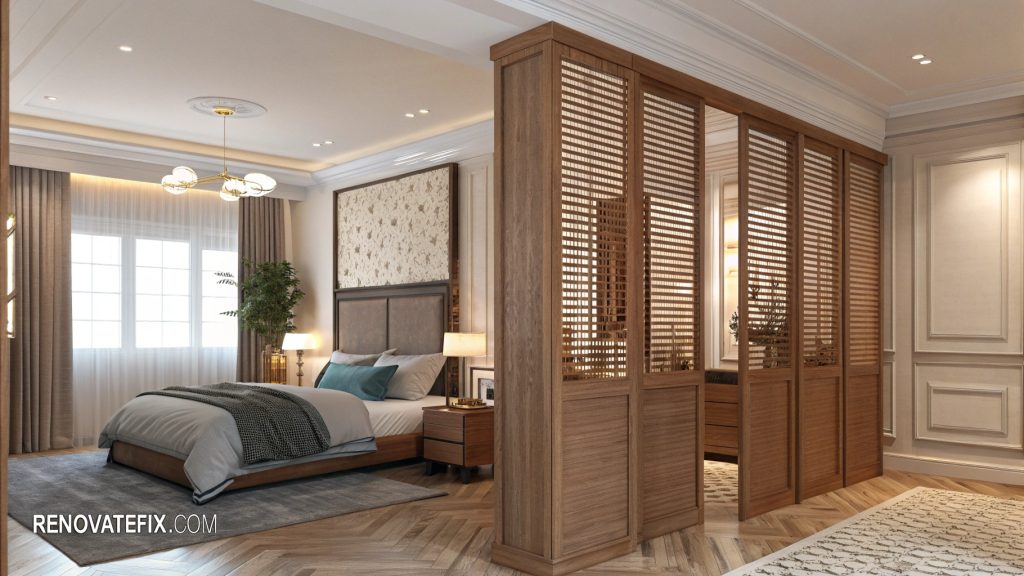
Choose materials like frosted glass, wooden slats, or fabric panels that maintain light flow while creating visual boundary, perfect for different sleep schedules or when one partner needs quiet concentration.
14. Botanical Corner Display
Dedicate area for curated plant collection that improves air quality while adding natural elements both partners can nurture together.
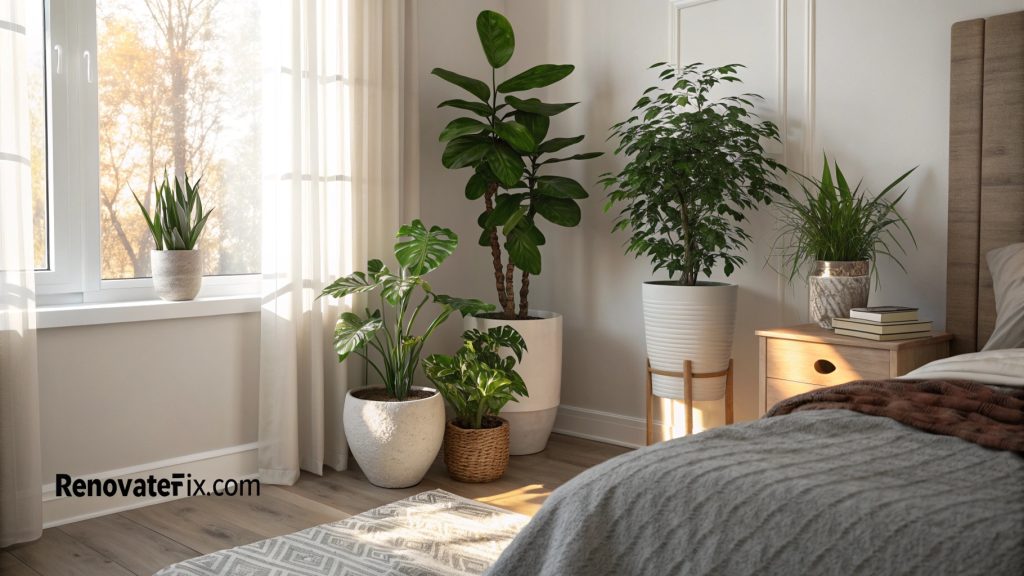
Vary plant heights, leaf shapes, and pot styles while maintaining cohesive look, creating living art installation that brings vitality, improved oxygen levels, and biophilic benefits to sleeping environment.
15. Multi-Functional Bench
Place sturdy seating piece at foot of bed that opens to reveal storage compartment, serving multiple purposes in limited space.
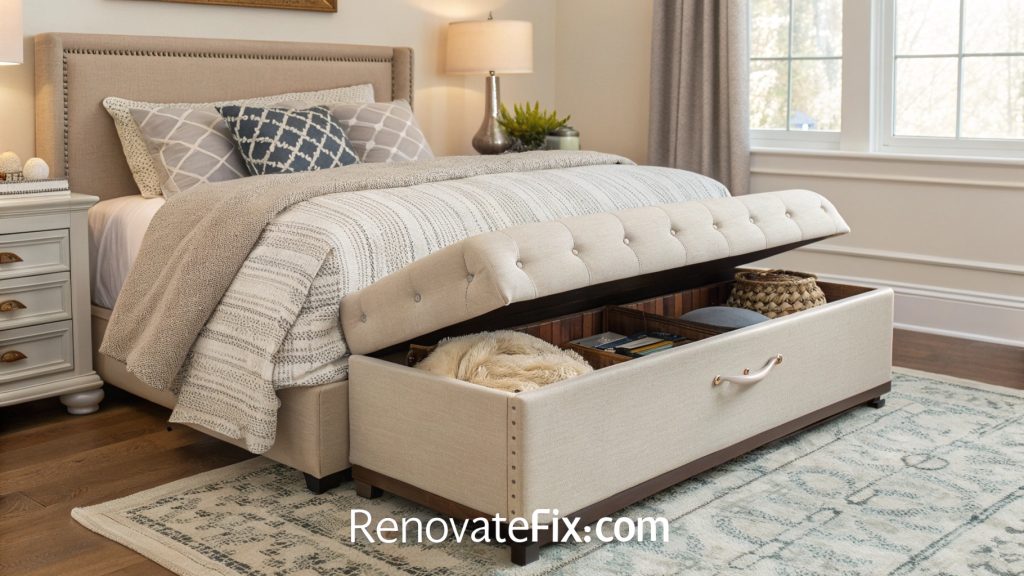
Use for seating while dressing, temporary placement of decorative pillows at night, or hidden storage for extra blankets and seasonal items, maximizing functionality without adding visual clutter.
16. Coordinated Color Blocks
Arrange furniture and décor in deliberate color groupings that create visual flow while incorporating both partners’ preferred palettes.
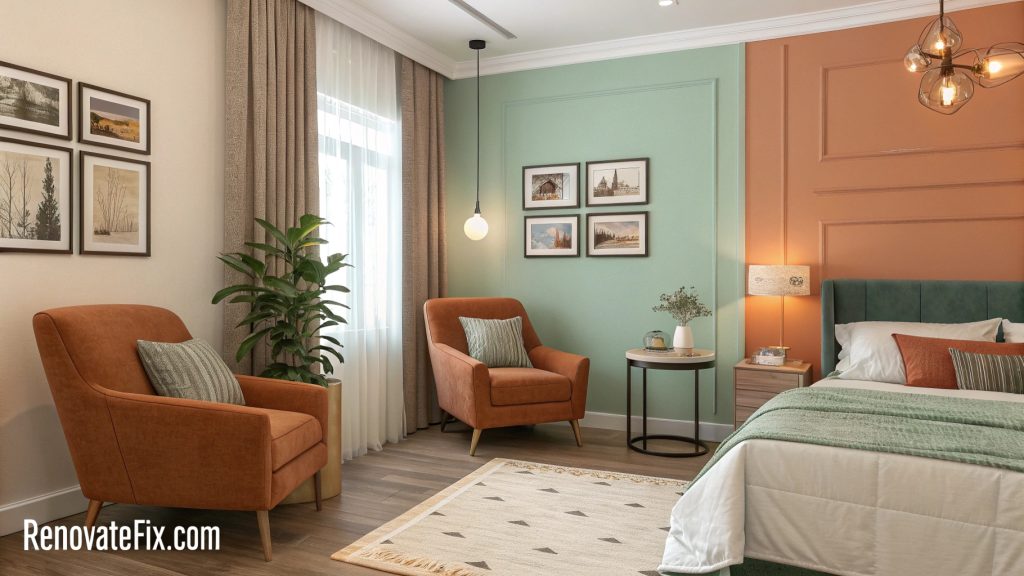
Assign different zones for different hues, allowing personal color preferences to coexist harmoniously through thoughtful placement rather than competing for dominance within same visual field.
17. Floating Platform Bed
Center sleep space on slightly elevated platform with understated lighting beneath, creating illusion of floating furniture while providing subtle nighttime illumination.
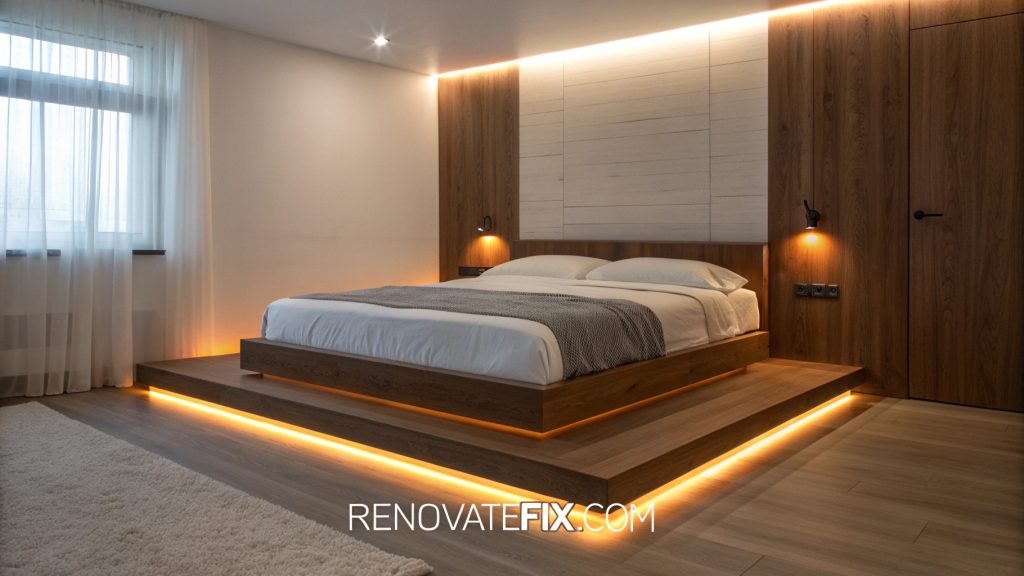
This architectural approach adds unexpected visual interest while serving practical purpose for midnight navigation, combining aesthetic appeal with functional benefit for both partners.
18. Sound Absorbing Wall Panels
Install decorative acoustic solutions that reduce noise reflection while adding textural interest to walls, creating quieter sleep environment.

Choose fabric-covered panels in coordinating colors or patterns, arranging in artistic configuration that dampens sound waves without sacrificing style, perfect for light sleepers or musically inclined partners.
19. Recessed Display Niches
Build shallow wall cavities finished in accent color or material, providing curated display areas for meaningful objects without protruding into valuable floor space.
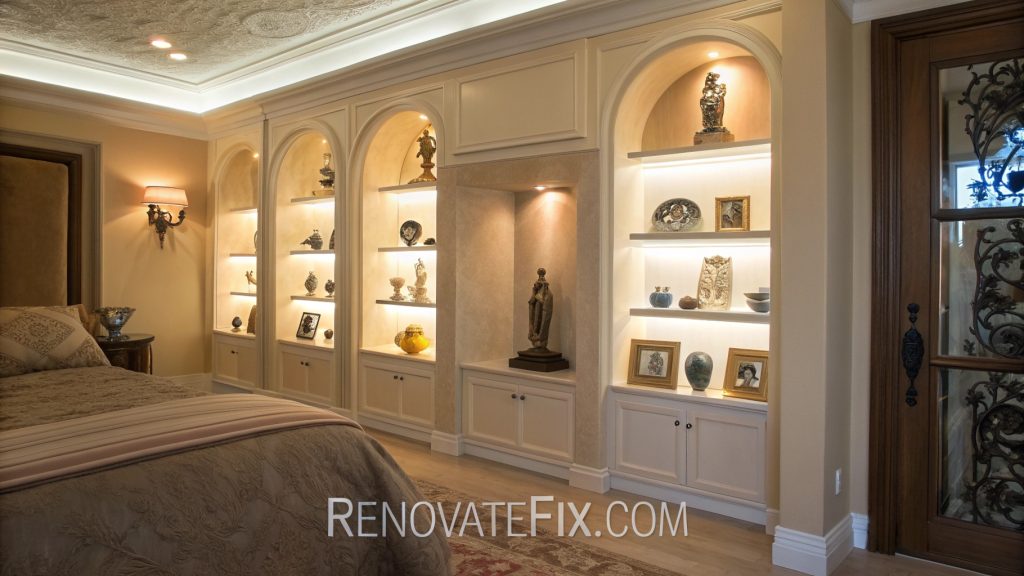
Space these architectural details strategically throughout room, allowing both partners to showcase cherished items within clean, defined boundaries that prevent cluttered surfaces.
20. Circular Furniture Arrangement
Break away from rectangular layouts by positioning key pieces in curved configuration, creating better conversation flow and sense of equality between partners.
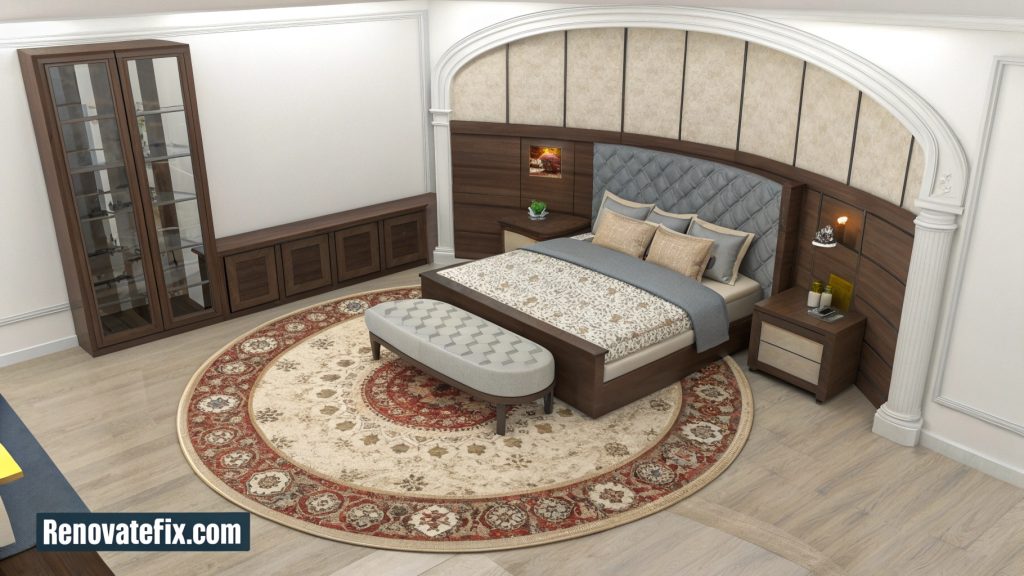
Round or oval area rug anchors circular theme, complemented by curved bench seating or semicircular headboard that softens room’s angular architecture.
21. Gradient Wall Treatment
Apply paint technique that gradually transitions between two colors vertically or horizontally across bedroom wall, symbolizing blending of two personalities into harmonious whole.
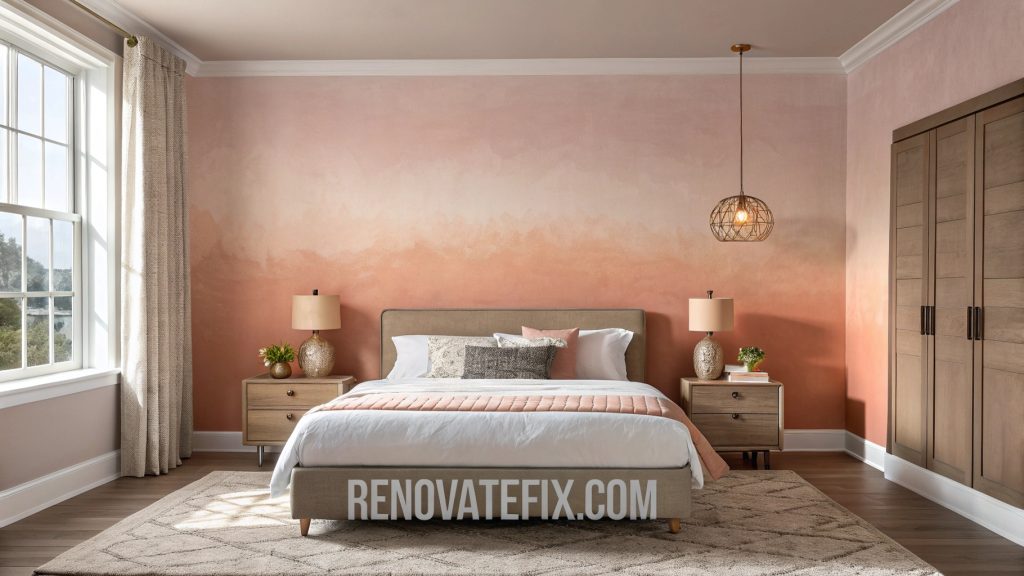
This ombré effect creates subtle visual movement without bold patterns, representing relationship’s natural flow from individual preferences toward shared aesthetic.
22. Elevated Corner Lounging
Construct slightly raised platform in bedroom corner with cushioned floor seating, creating intimate conversation or relaxation spot separate from main sleeping area.

Add soft pillows, small side table, and dedicated lighting, establishing alternative lounging zone where couples can connect away from bed itself.
23. Mixed Materials Headboard
Craft statement piece combining different textures like wood, upholstered sections, and metal accents into unified design that satisfies varied aesthetic preferences.

This custom approach allows incorporation of elements appealing to both partners—perhaps industrial details alongside softer components—creating focal point that represents relationship’s complementary nature.
24. Hideaway Workspace
Install compact desk solution within cabinet or closet that completely closes when not needed, maintaining bedroom’s restful purpose while accommodating occasional work requirements.
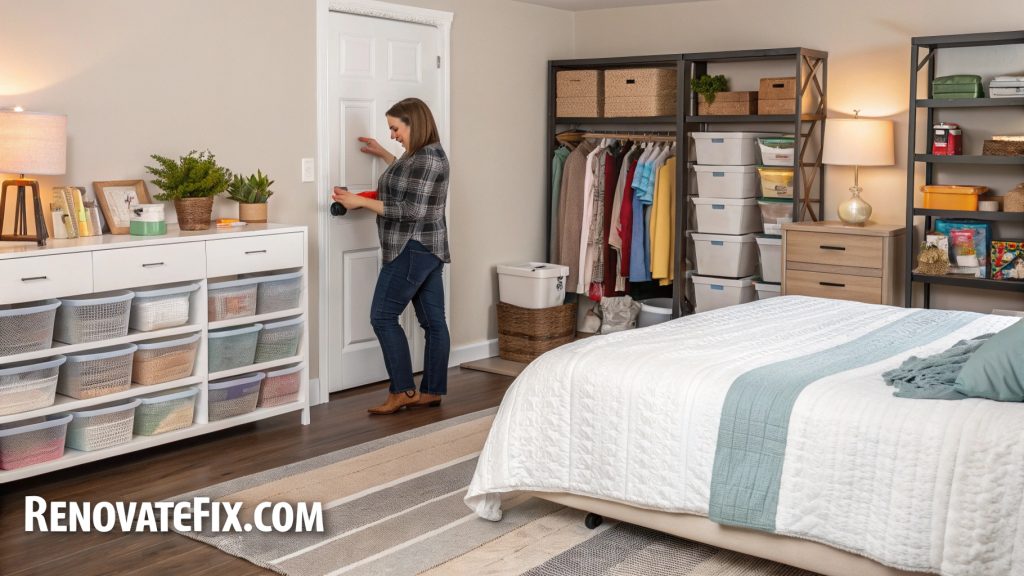
This concealed productivity zone prevents job stress from invading sleep environment, supporting healthy boundaries between professional demands and relationship space.
25. Seasonal Rotation System
Establish storage solution and schedule for swapping décor elements quarterly, allowing bedroom to evolve throughout year without major renovations.
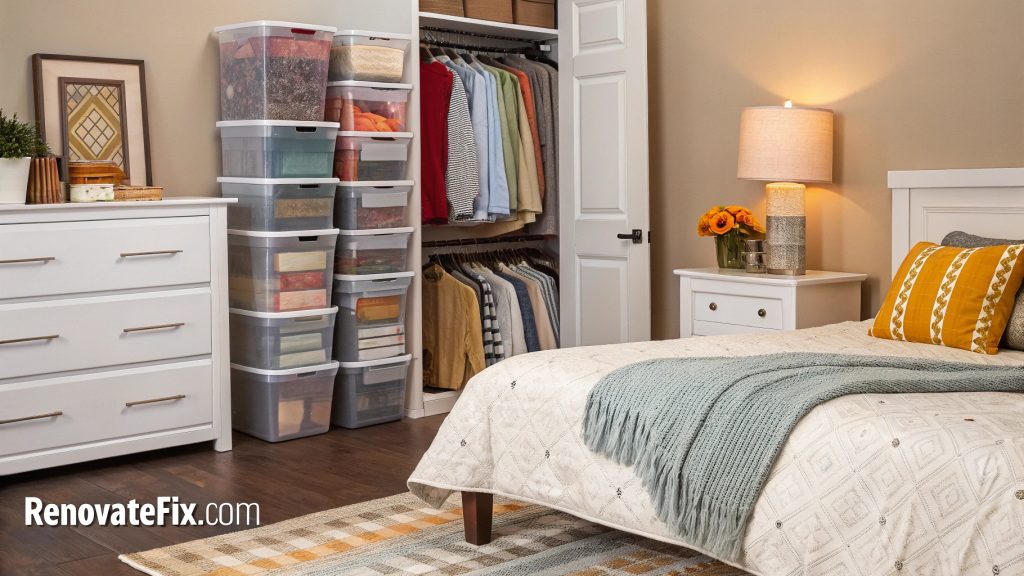
Create labeled containers for off-season items, making gradual transitions between heavier winter textiles and lighter summer options that keep shared space feeling fresh and responsive to environmental changes.
Conclusion
Creating a bedroom for couples involves thoughtful balance between individual expression and shared aesthetic vision.
By implementing ideas that honor both personalities while fostering connection, you’ll develop a space that truly nurtures your relationship.
Remember that the most successful shared bedrooms evolve organically over time, incorporating new elements as your partnership grows and changes.
Whether you adopt one suggestion or combine several approaches, prioritize comfort, communication, and compromise throughout the design process.
The result will be more than just an attractive room—it will be a meaningful environment that supports your journey together, providing daily sanctuary where you can rest, reconnect, and celebrate your unique bond.

